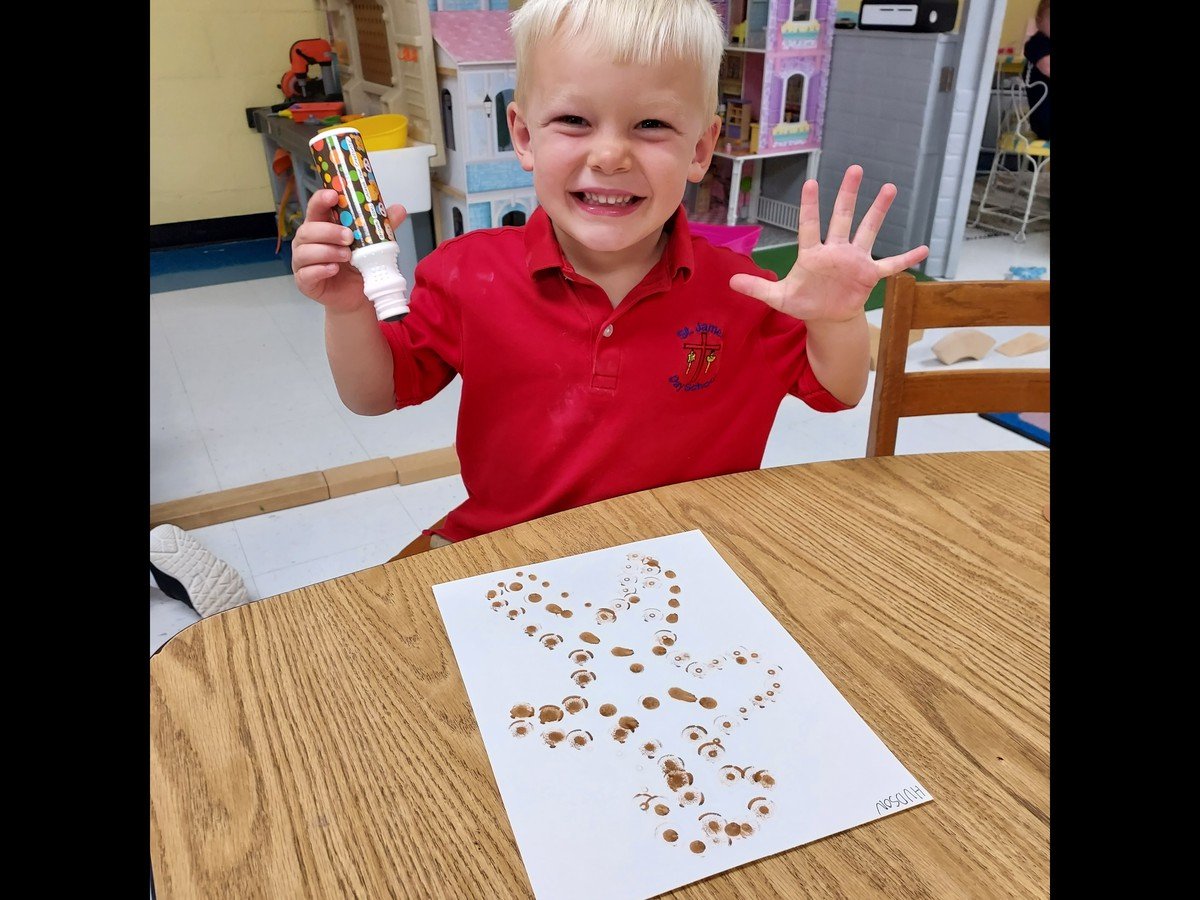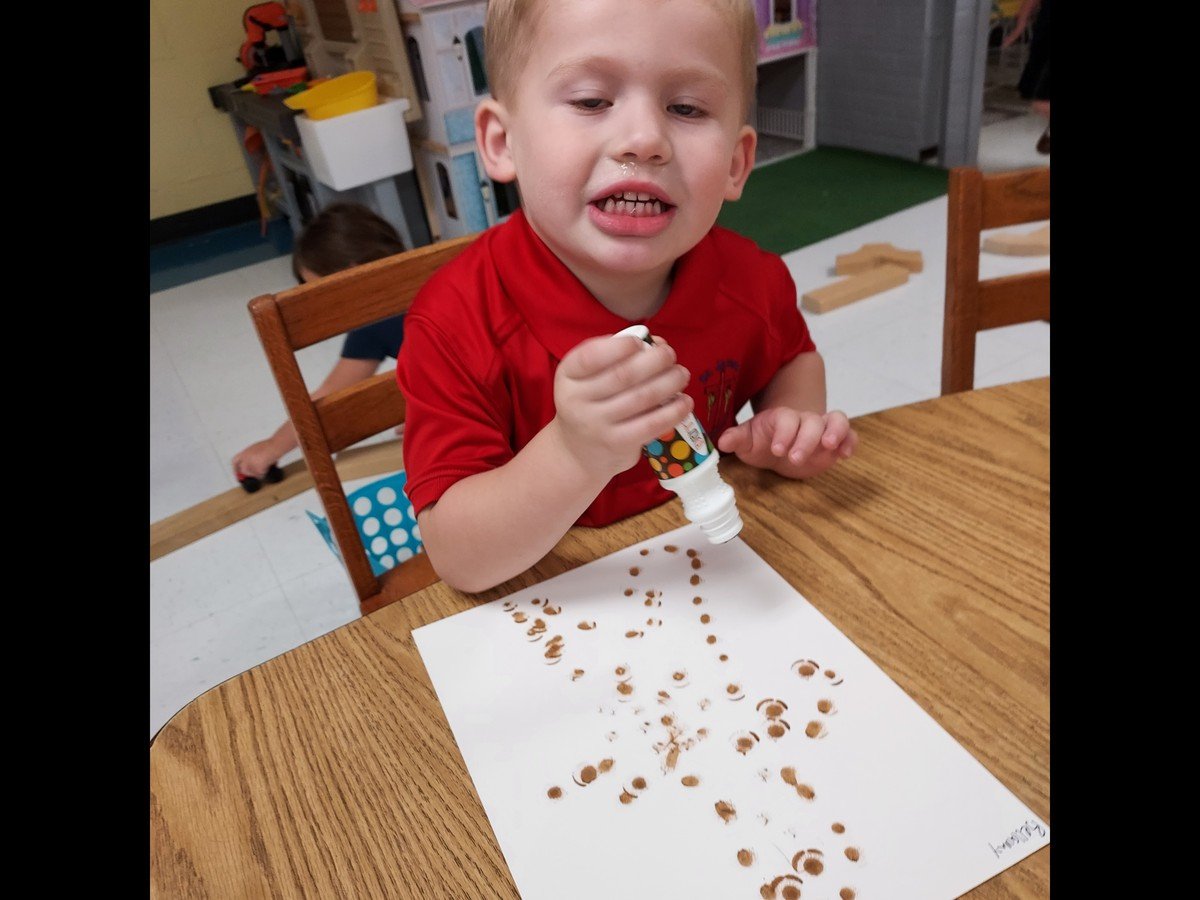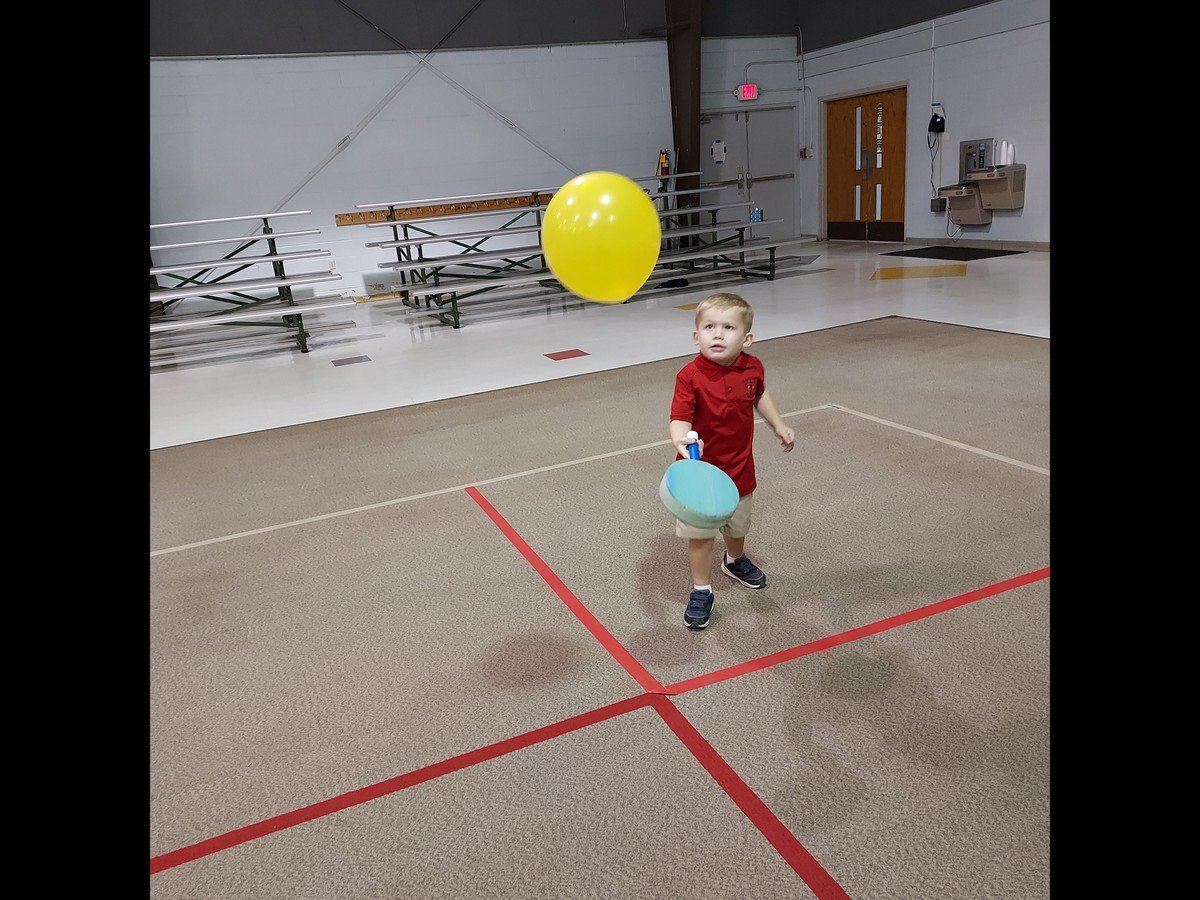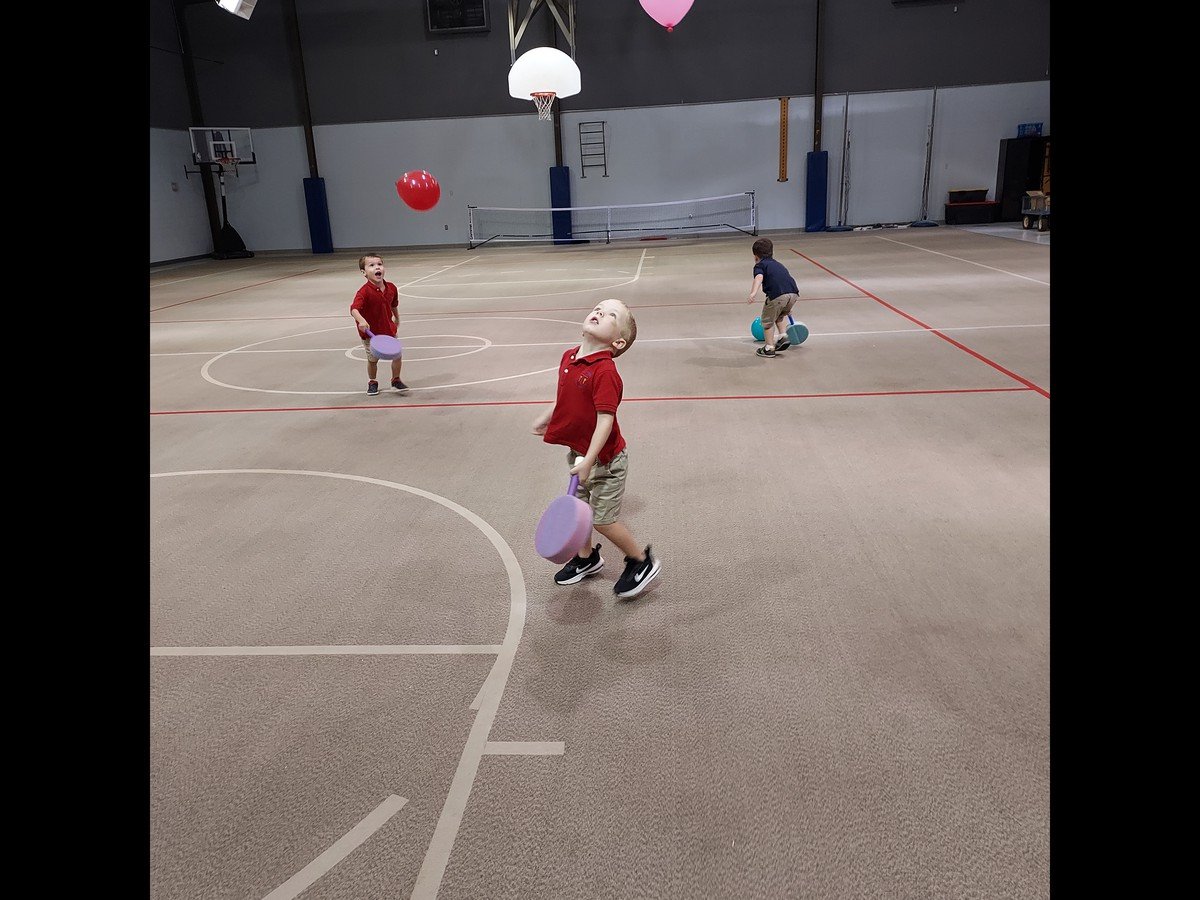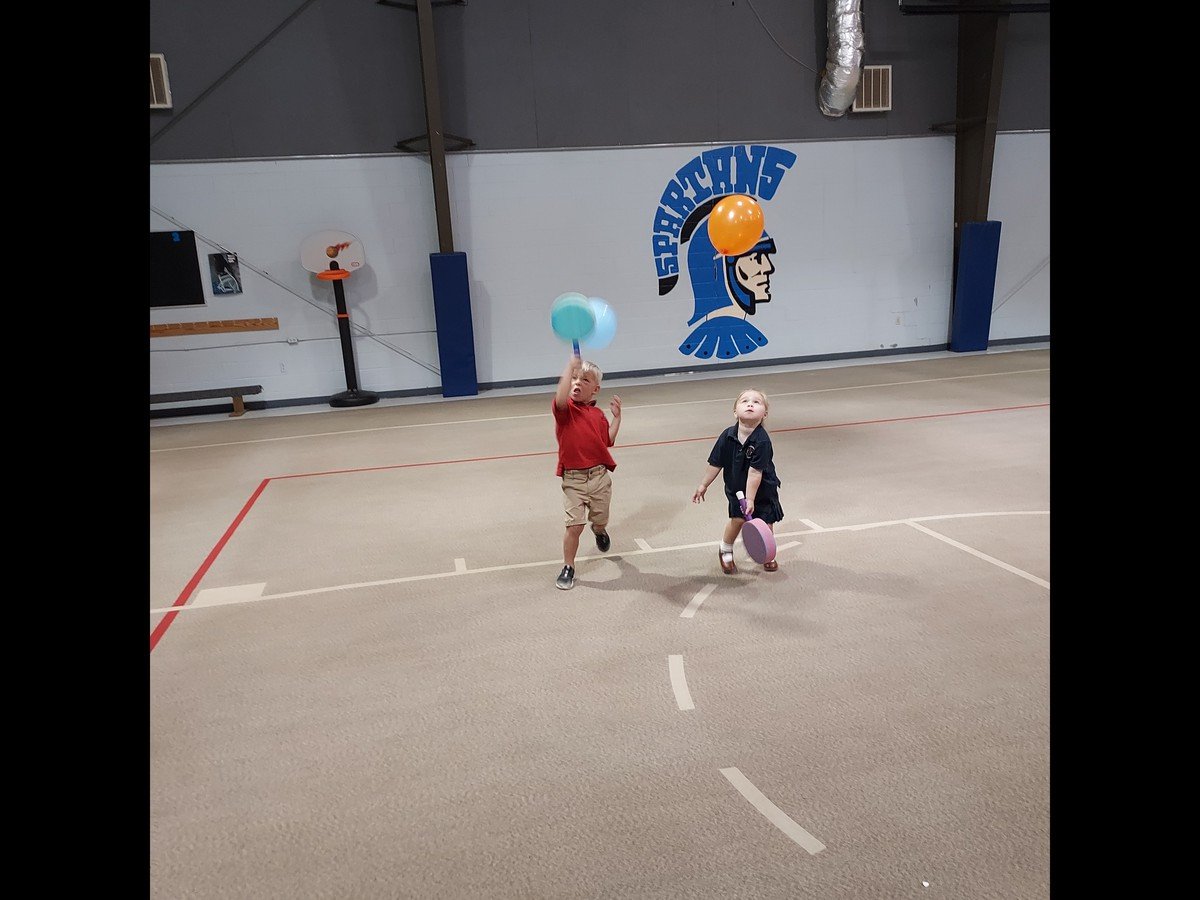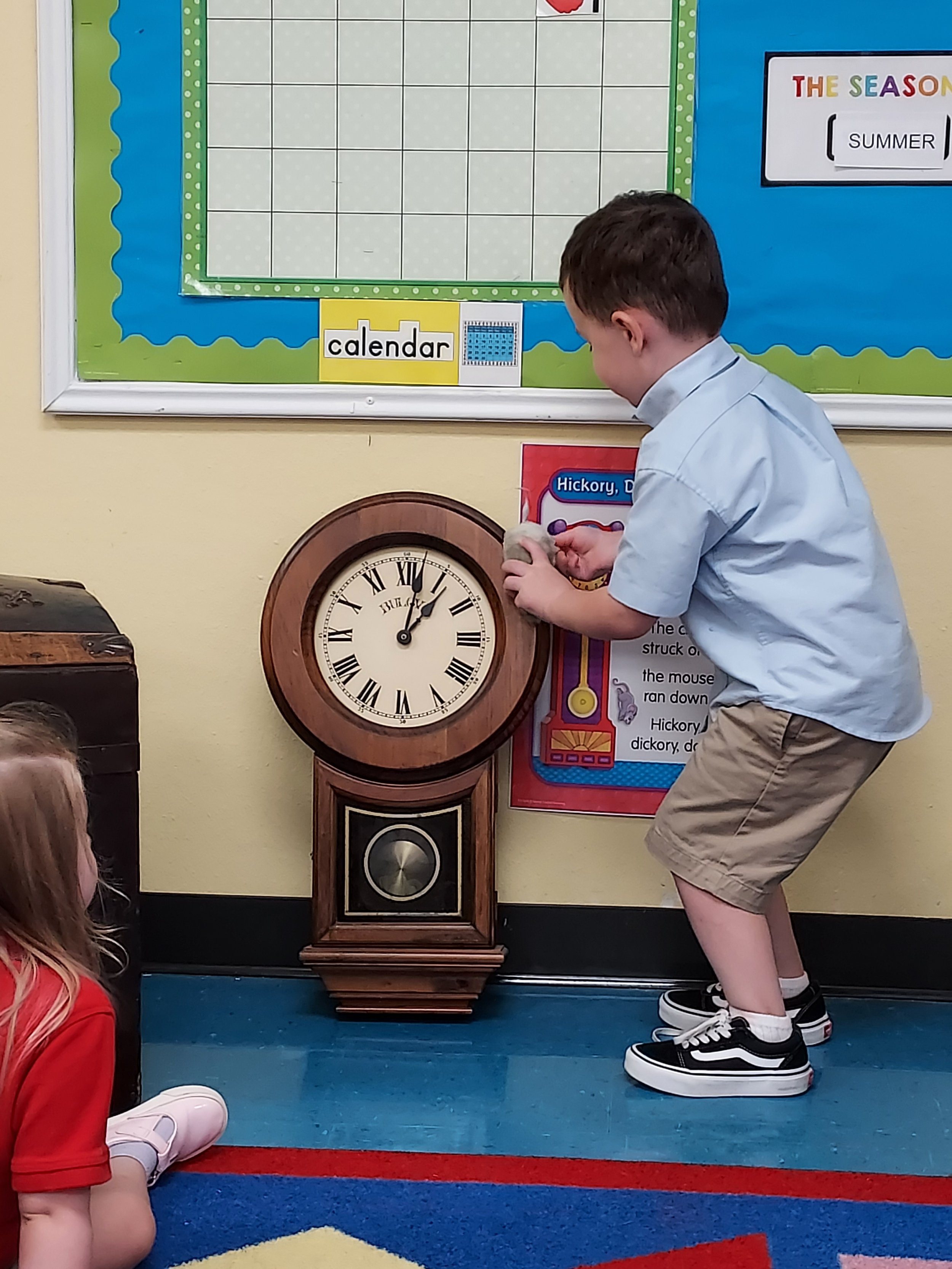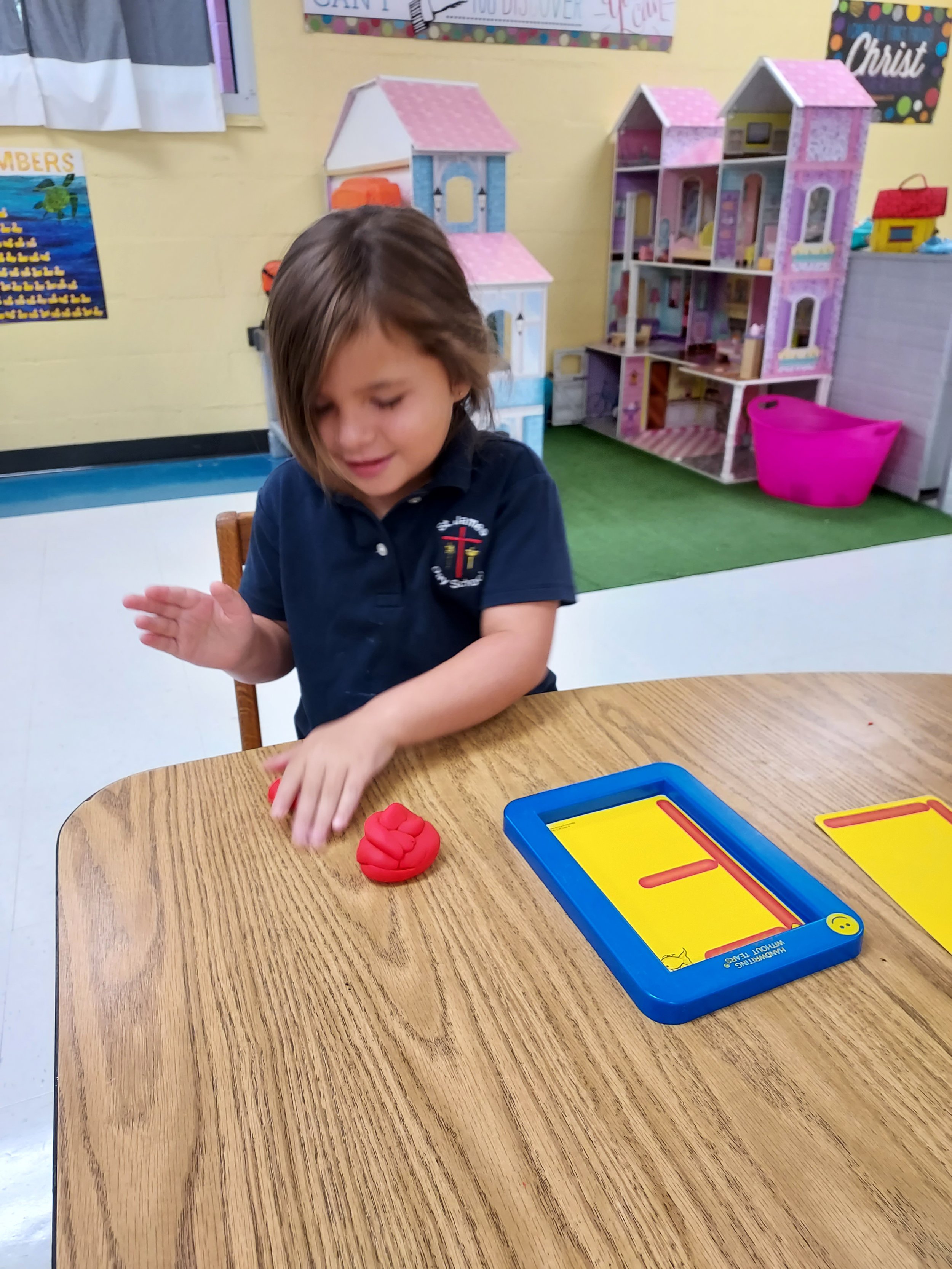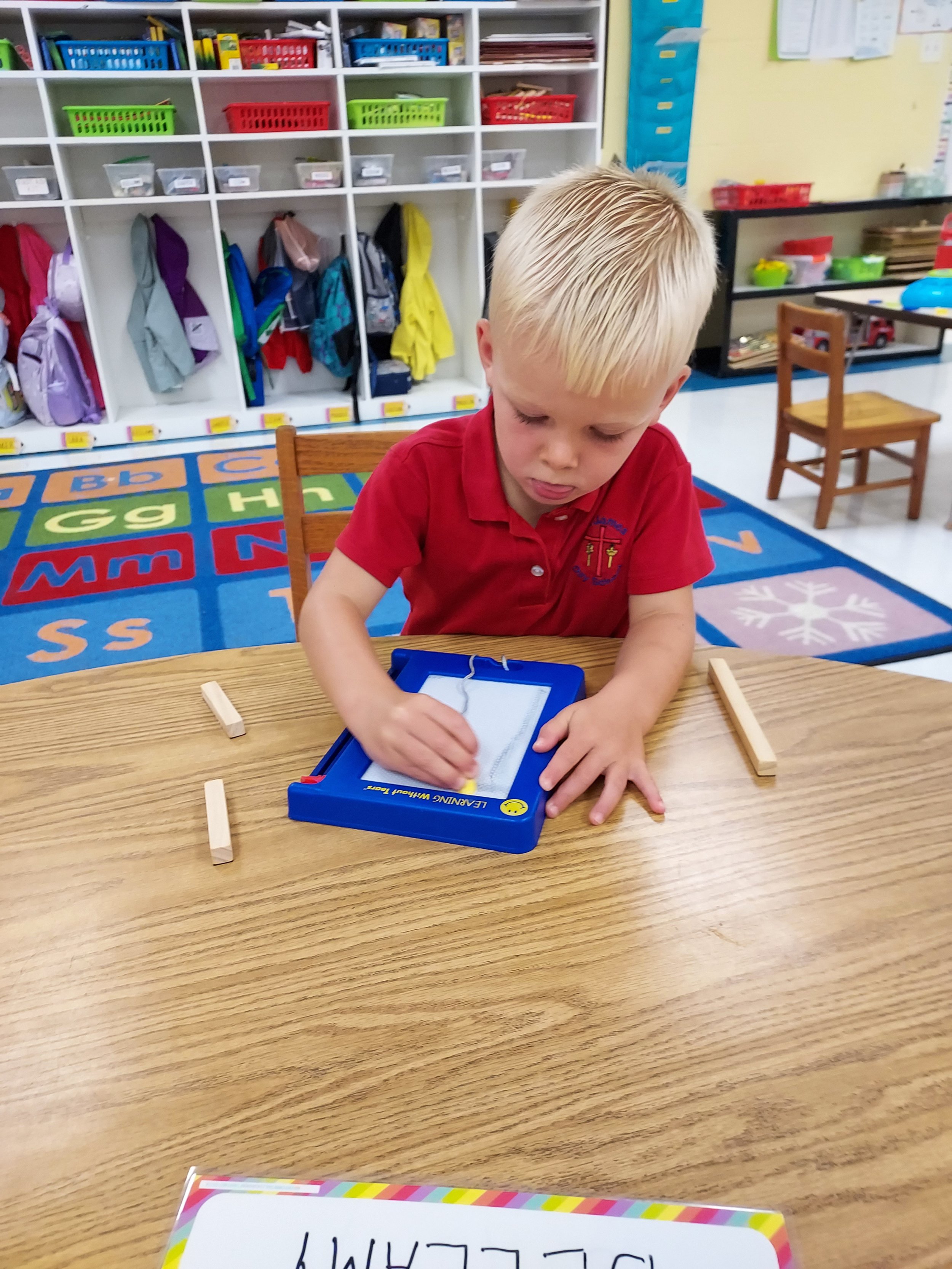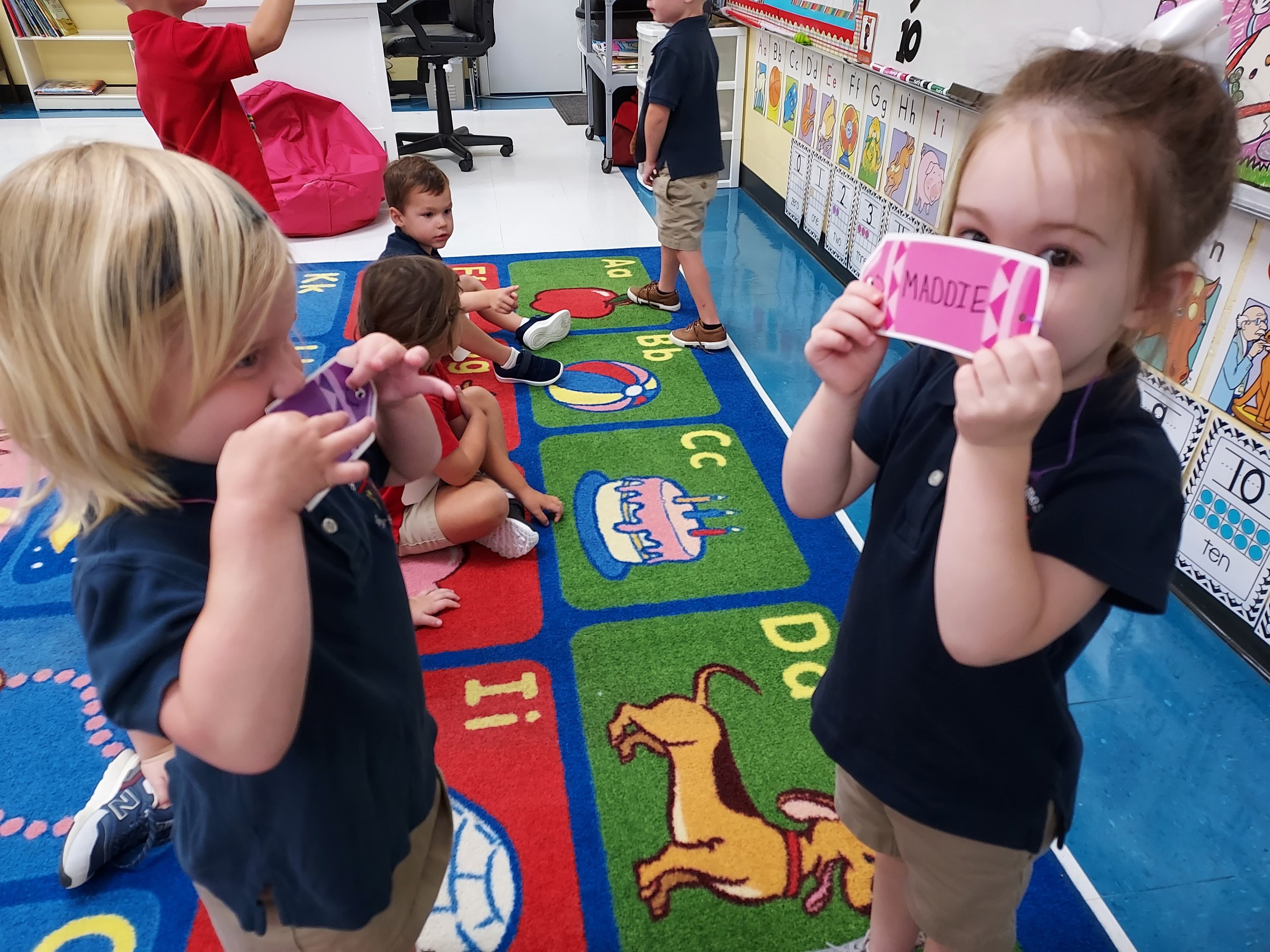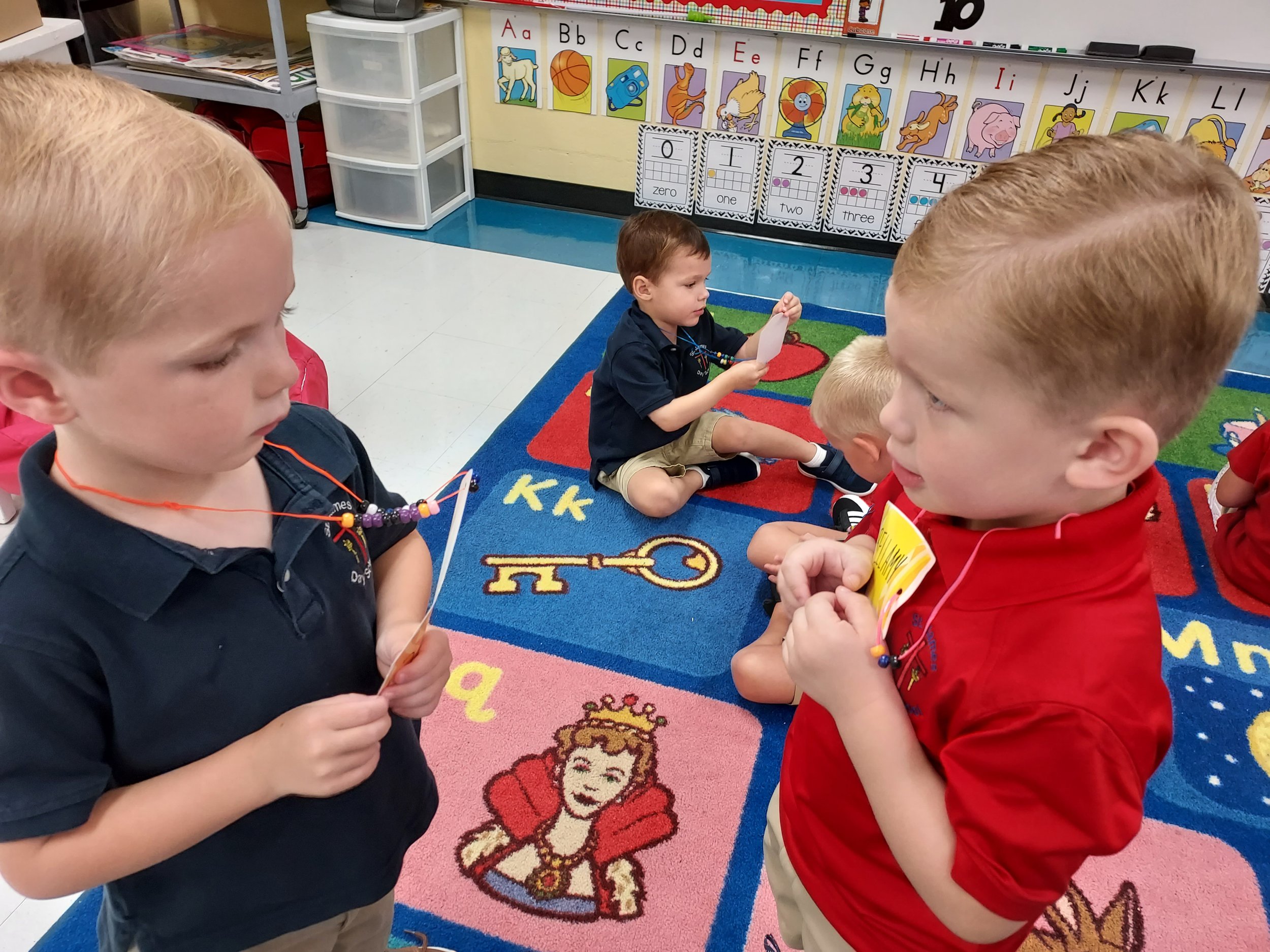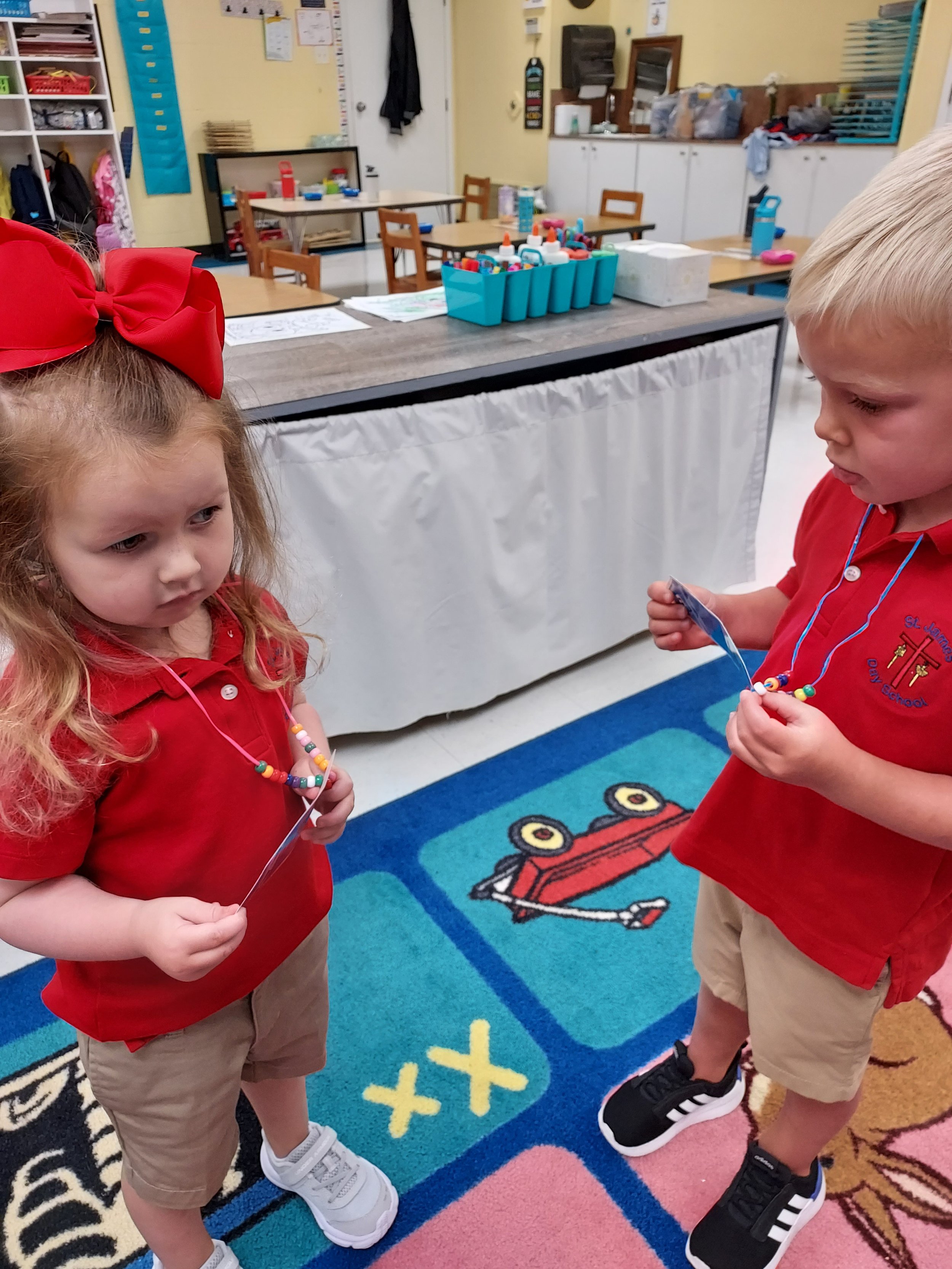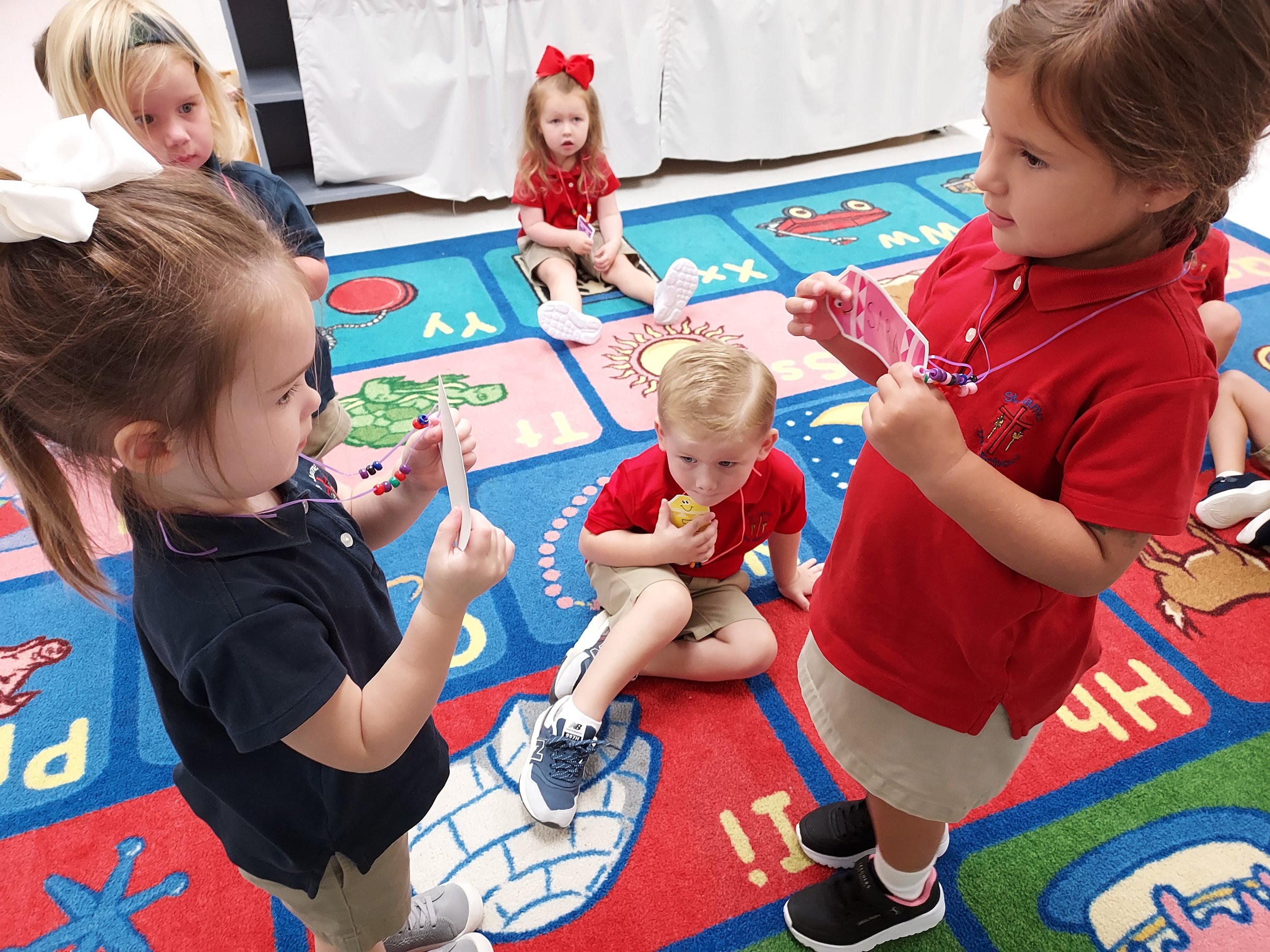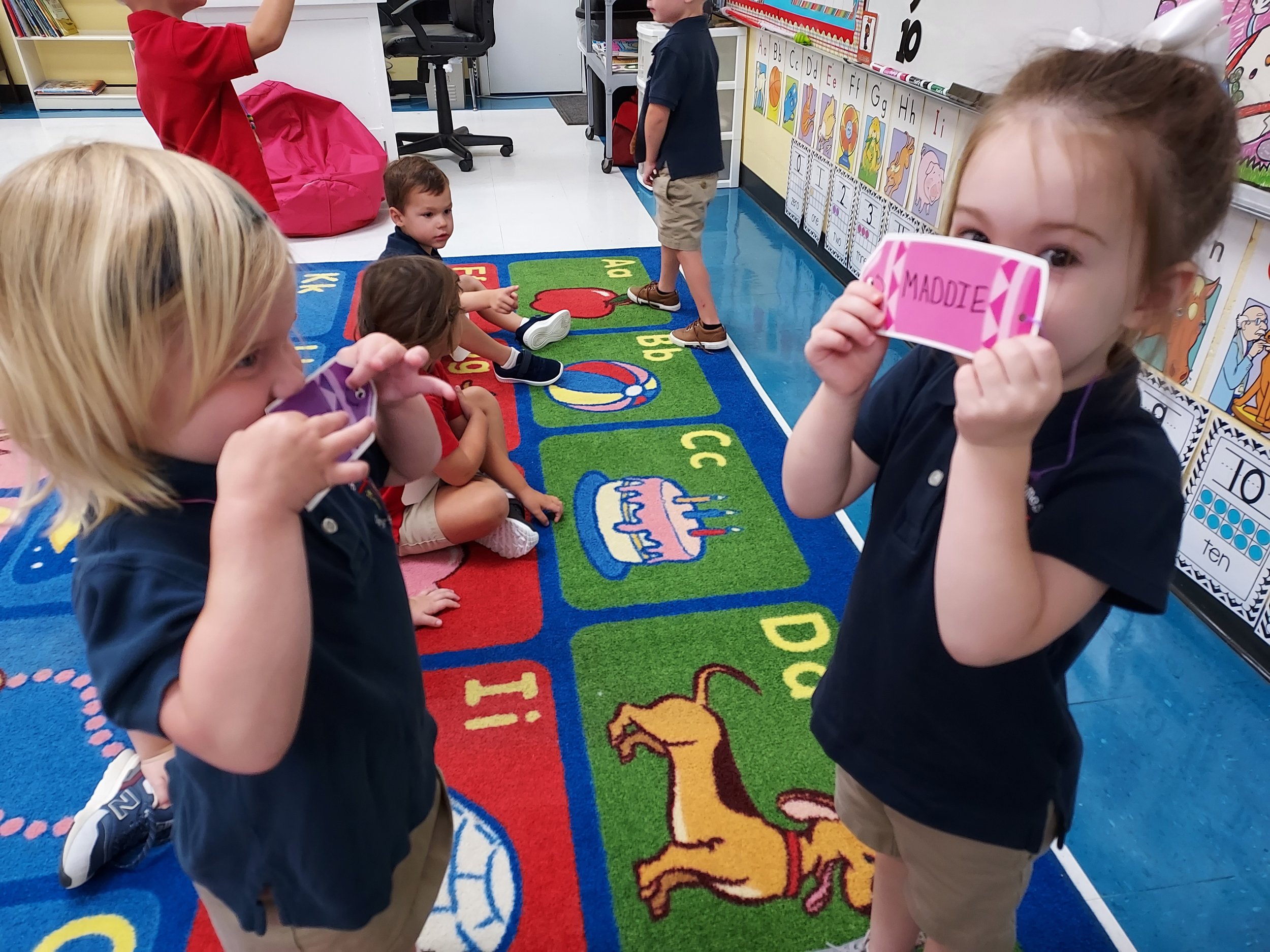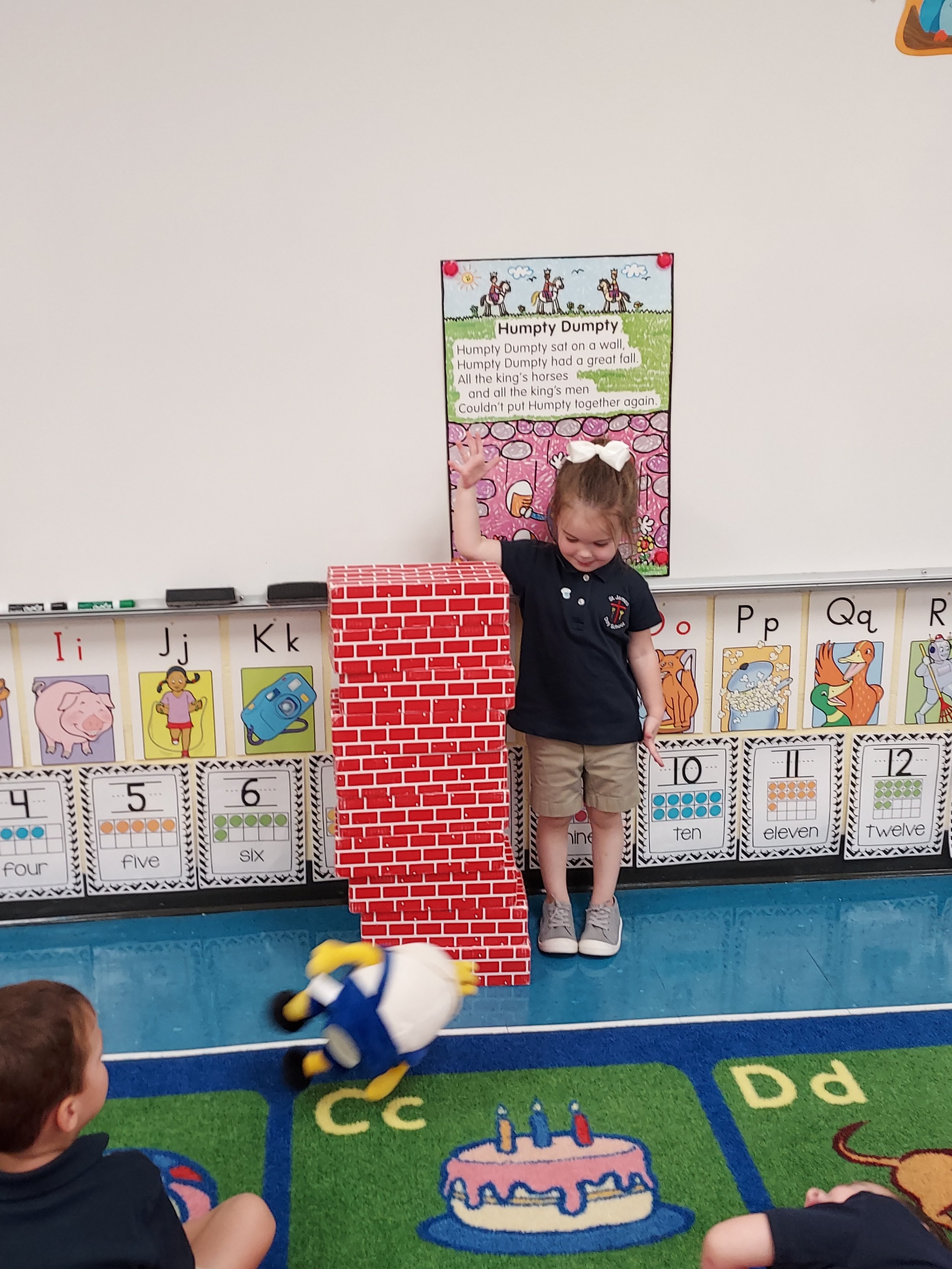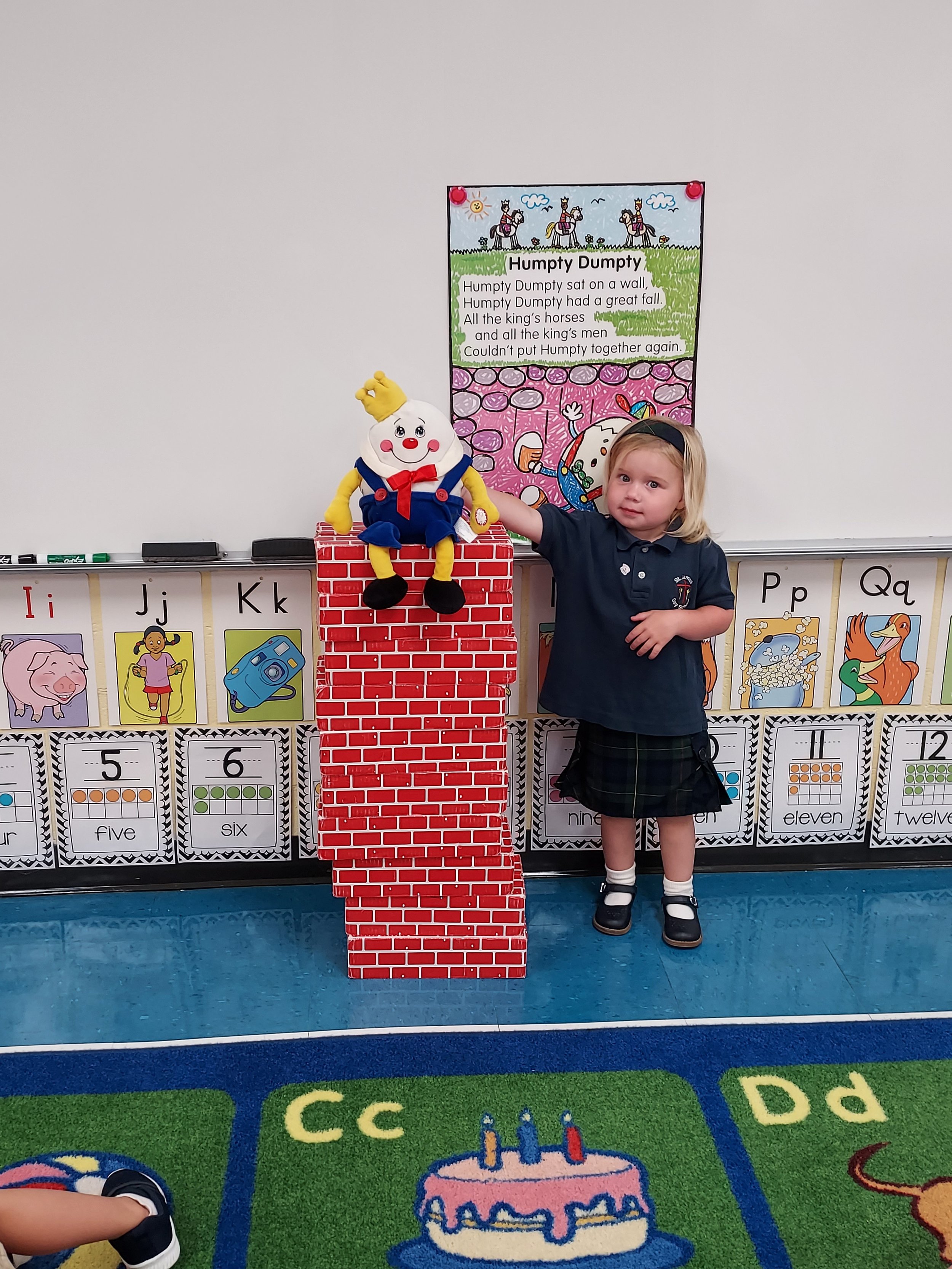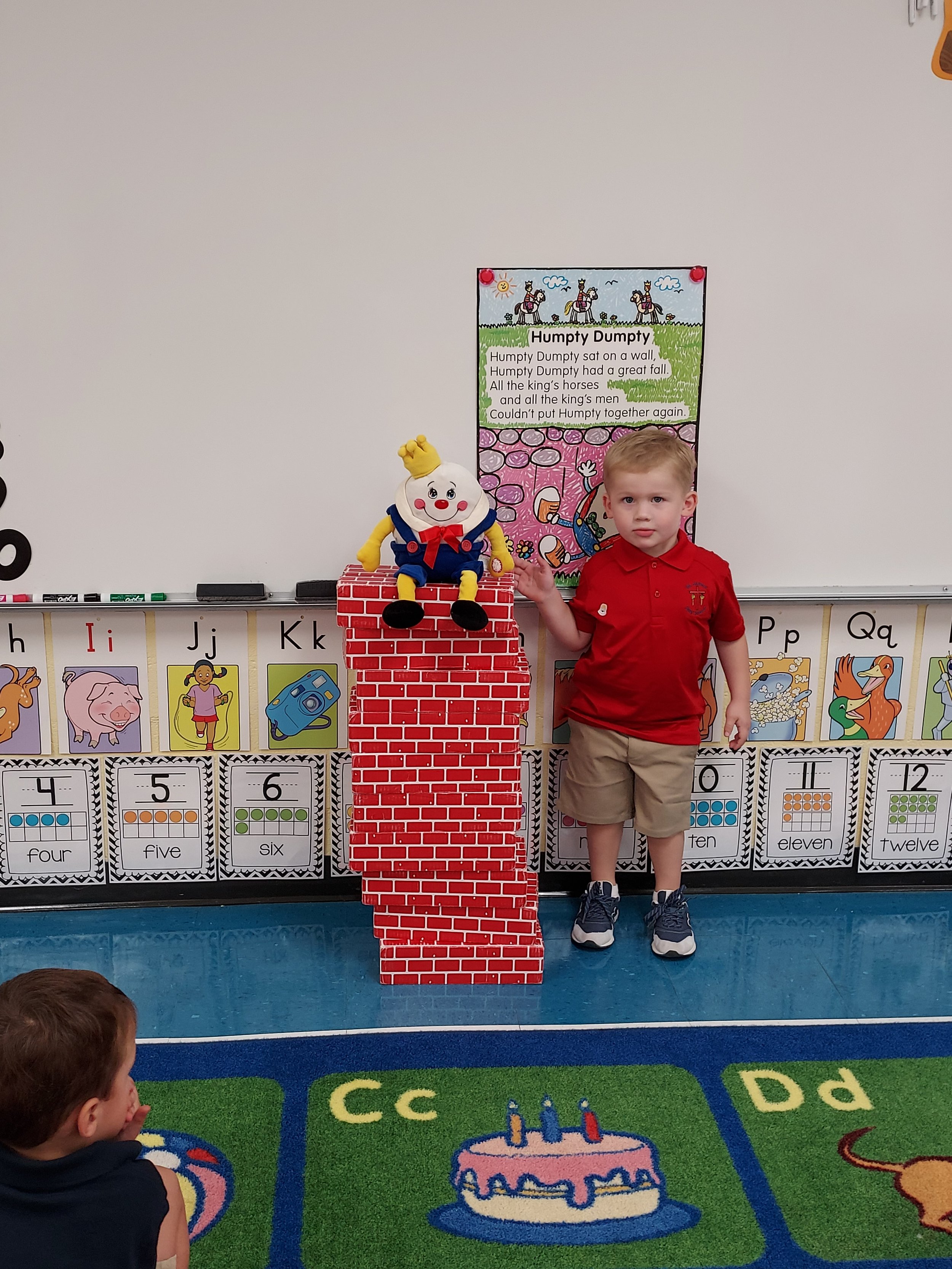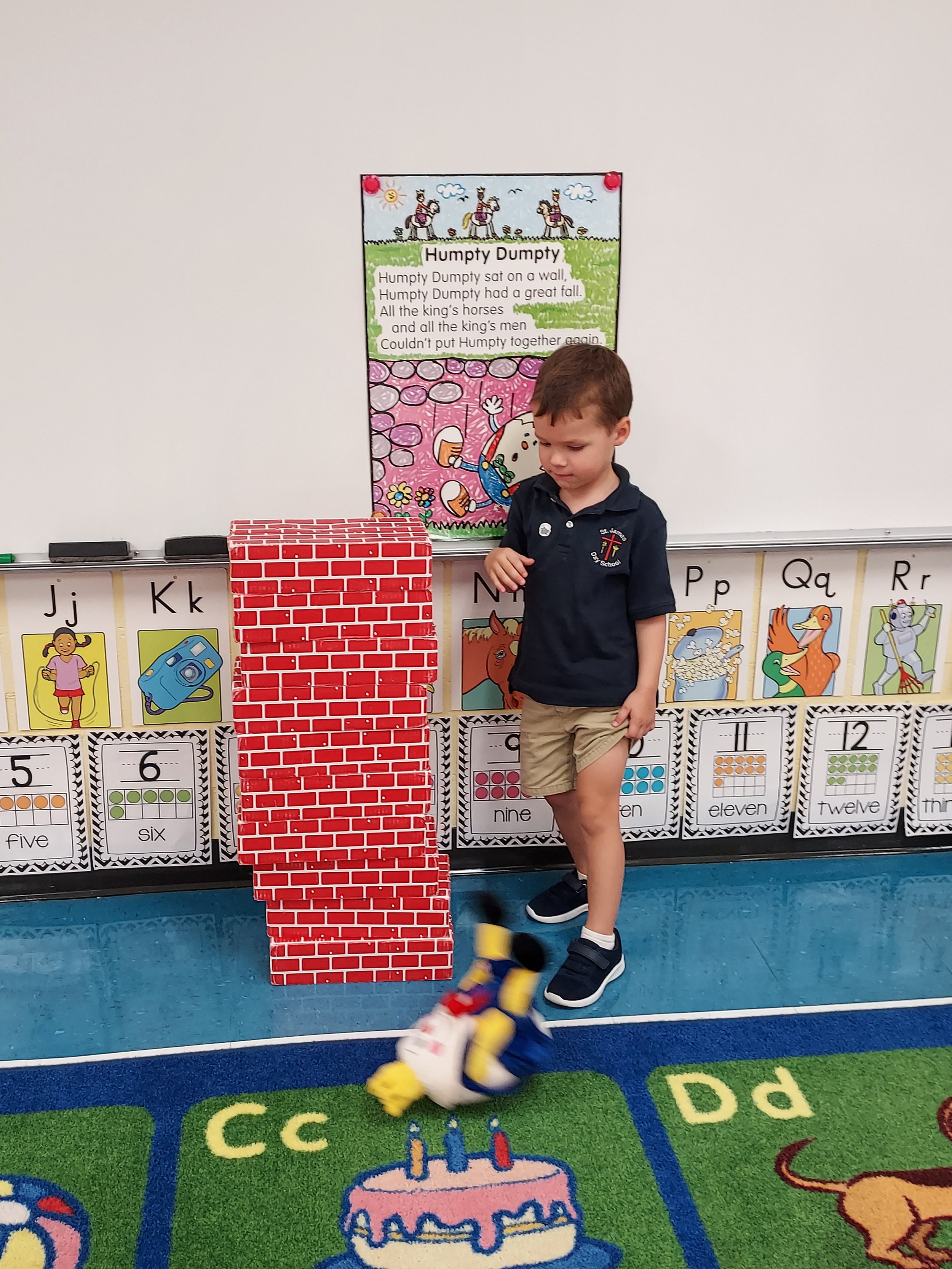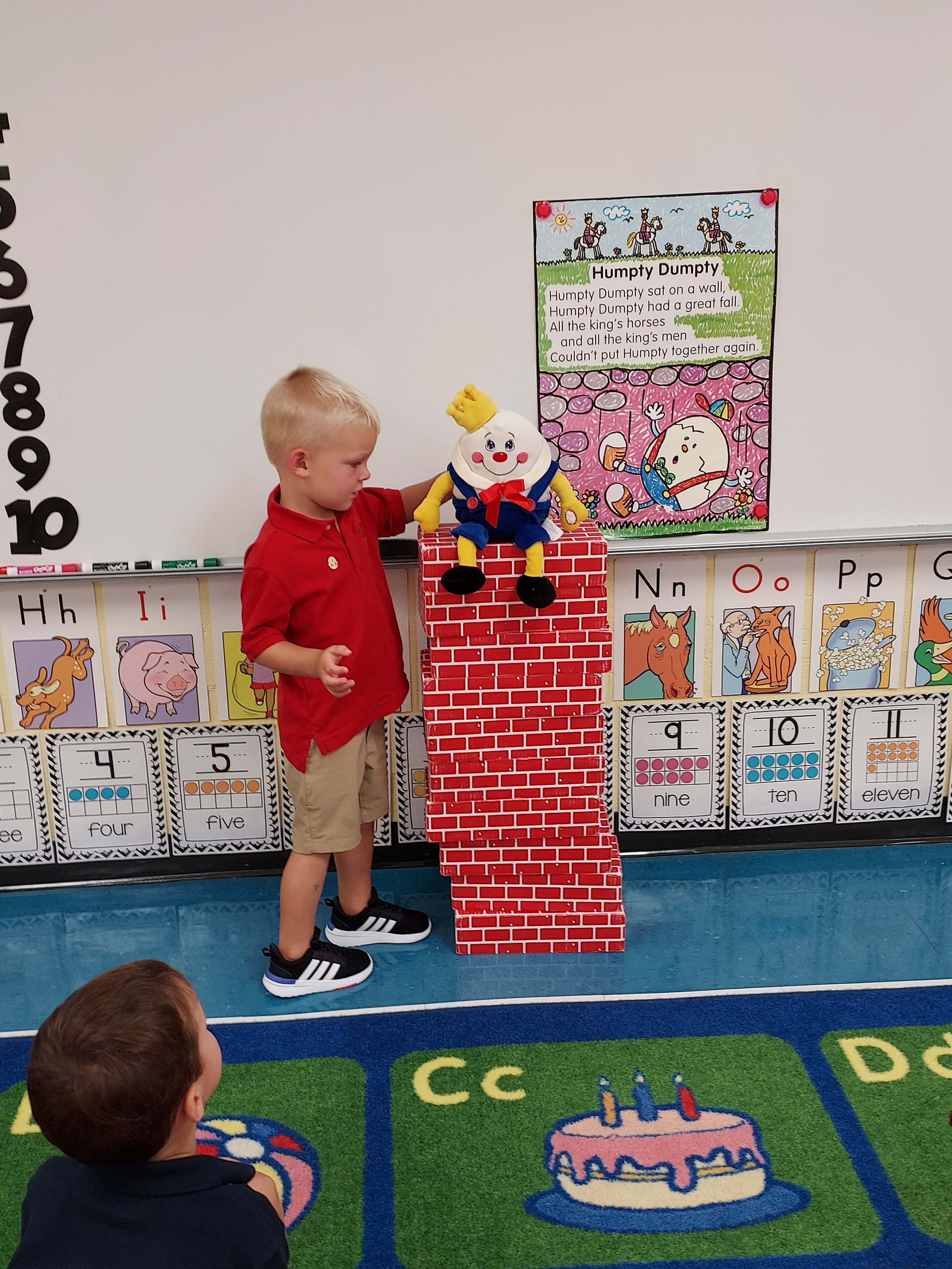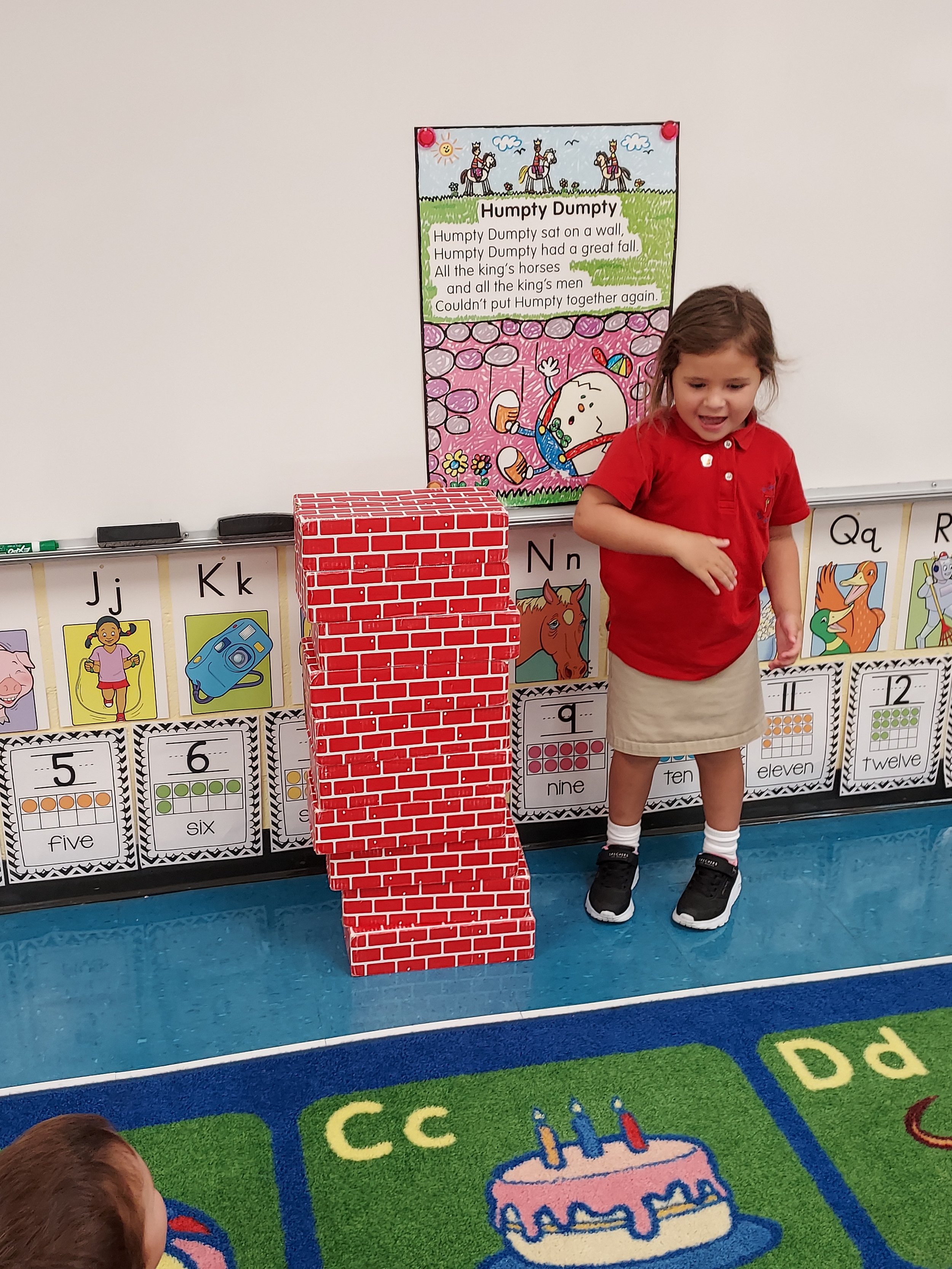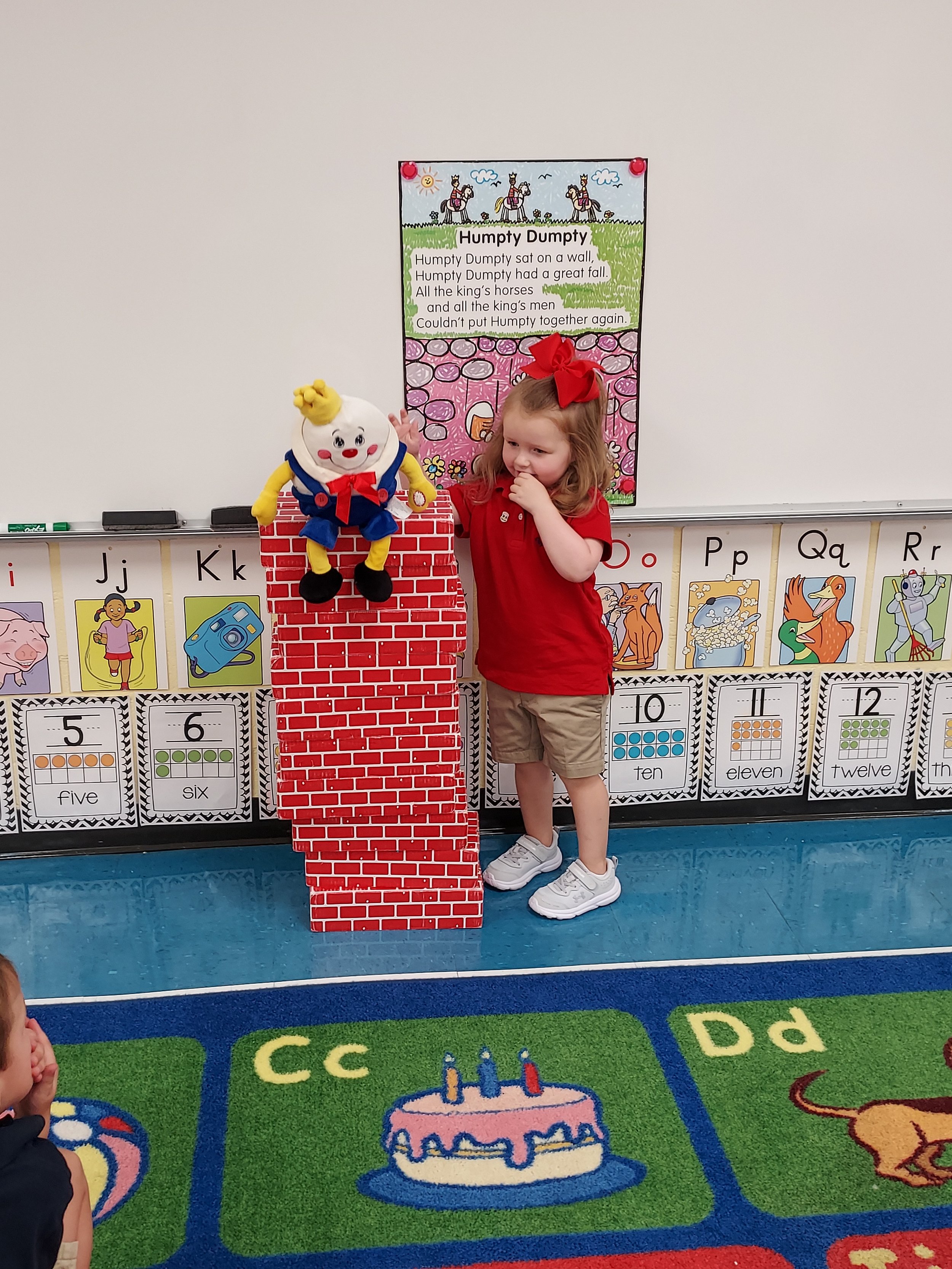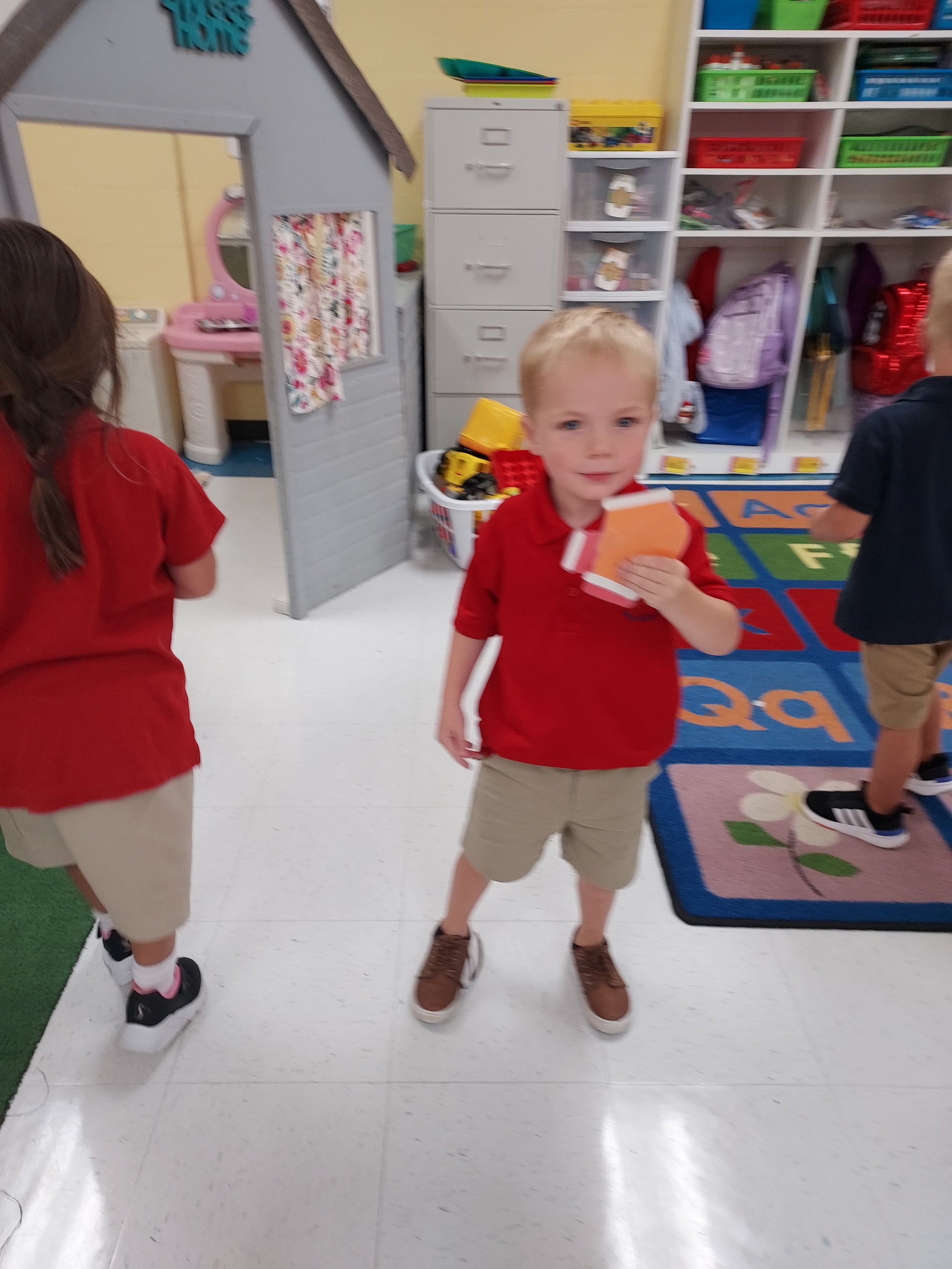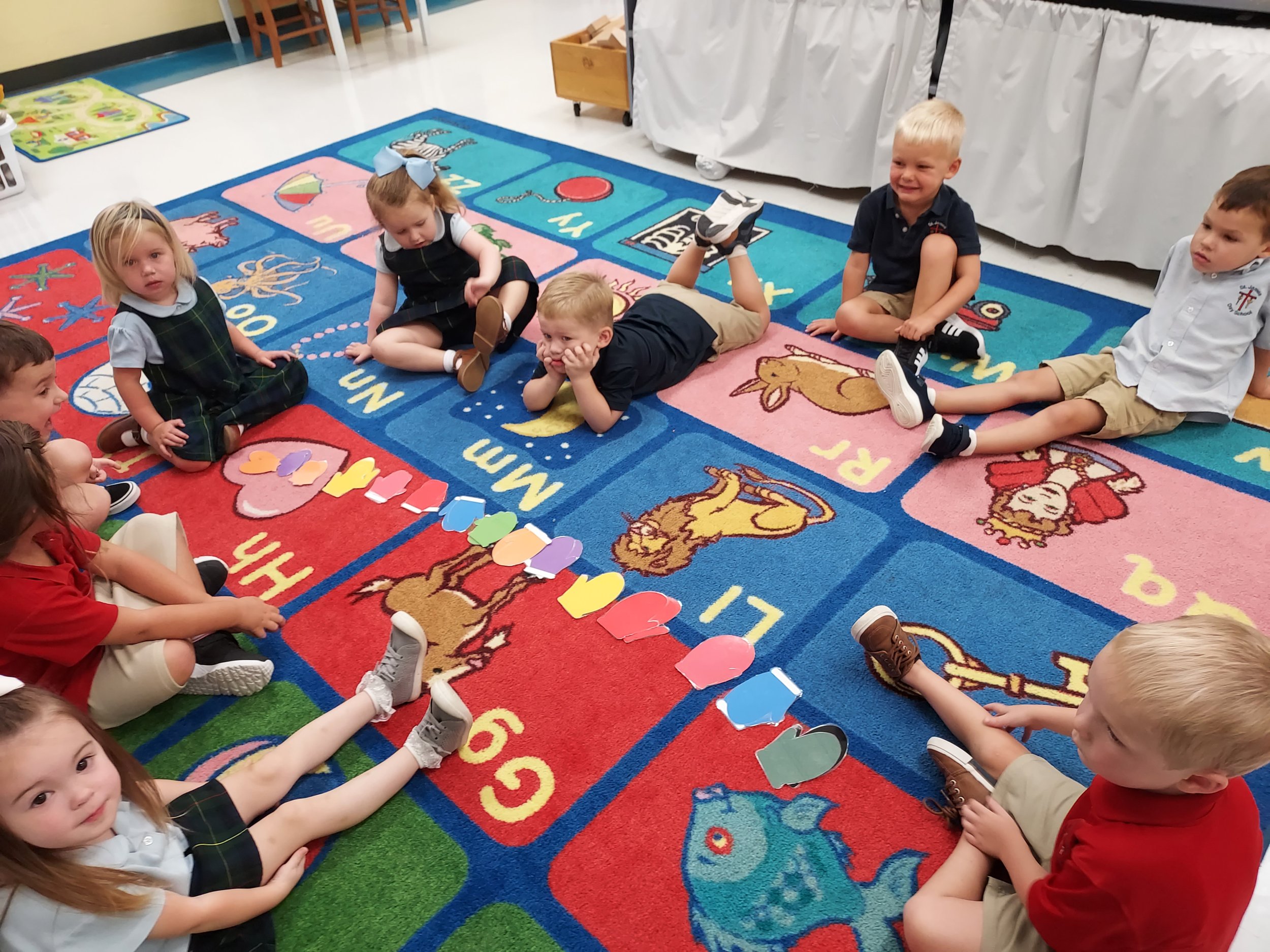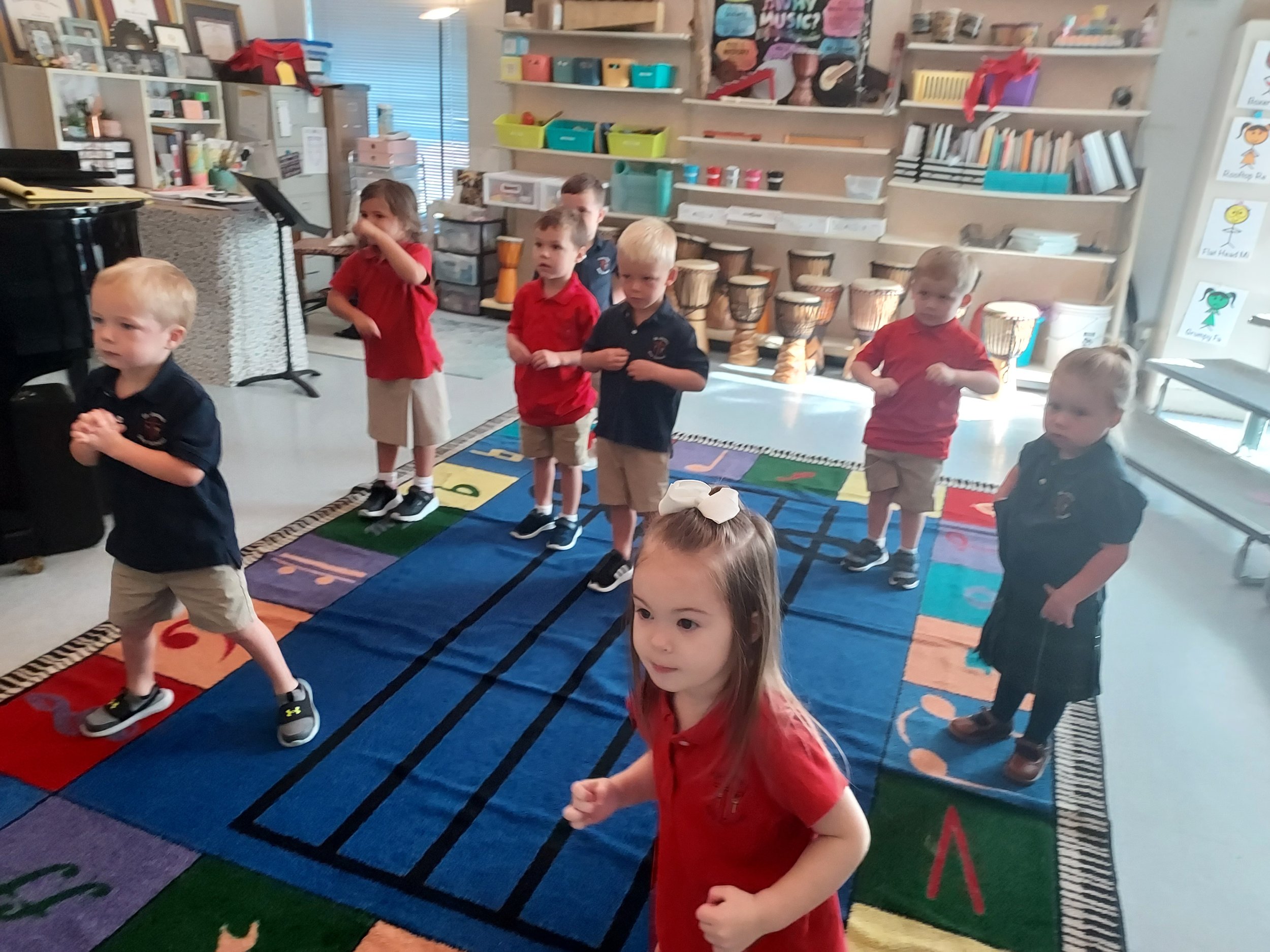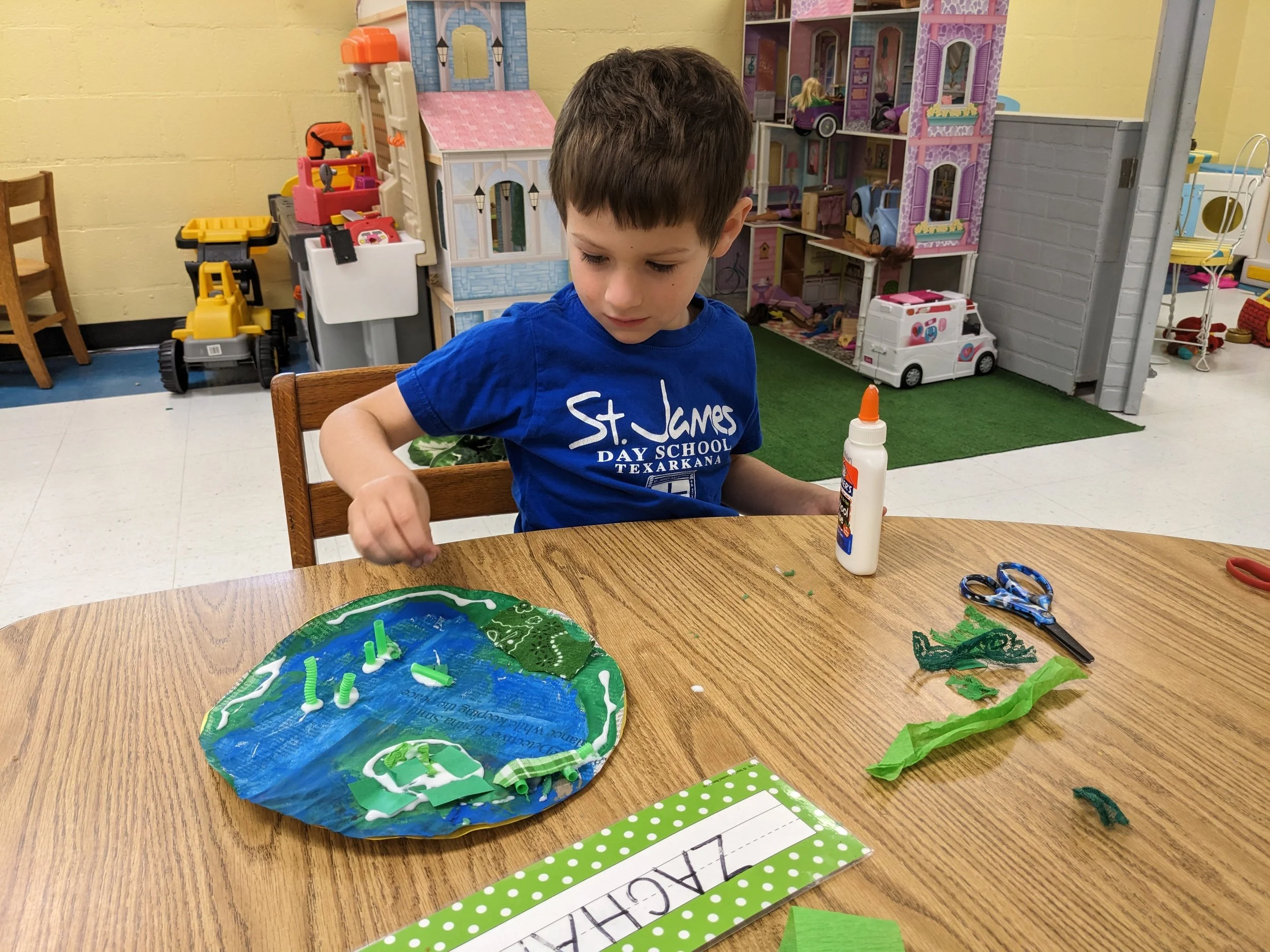Mrs. Diane's and our class went on a Gingerbread Man hunt. He left us clues all over campus and the children even saw him running about! The Gingerbread Man us waiting on us when we got back to the room and everyone got a chance to have a piece of cookie
TheColorBrown
One of the greatest benefits of using bingo daubers is they allow children to practice hand-eye coordination and fine motor skills. As they direct the dauber to go where they want, they must use their little muscles and hand-eye coordination to maneuver it. Their dexterity improves as they hold and flip the bingo daubers, which is an important skill when it comes to handwriting. Using a brown dauber, we made a gingerbread man.
P.E.
In P.E. this week, Coach Nicole gave the children a paddle and a balloon to work on hand eye coordination.




